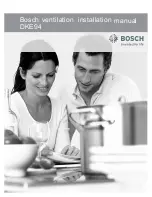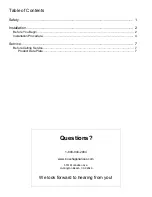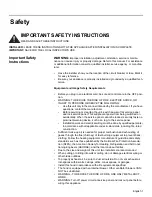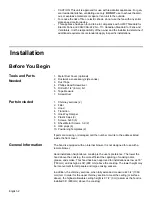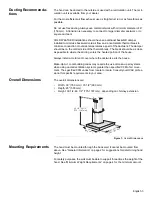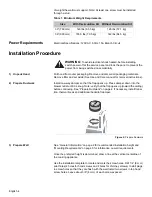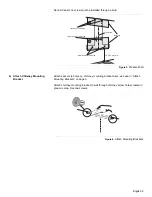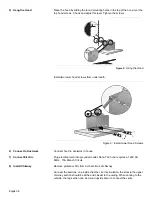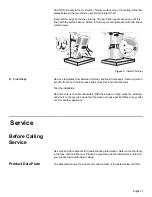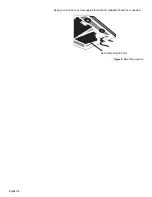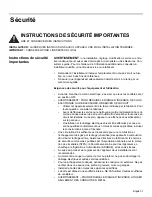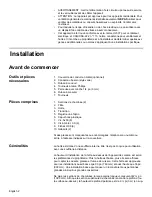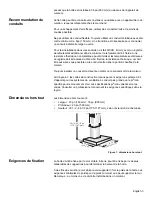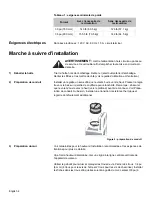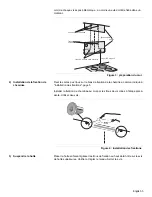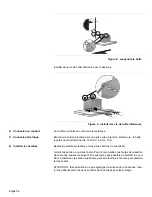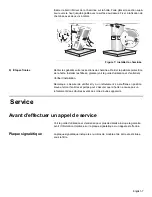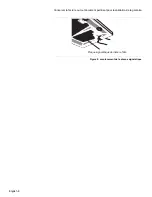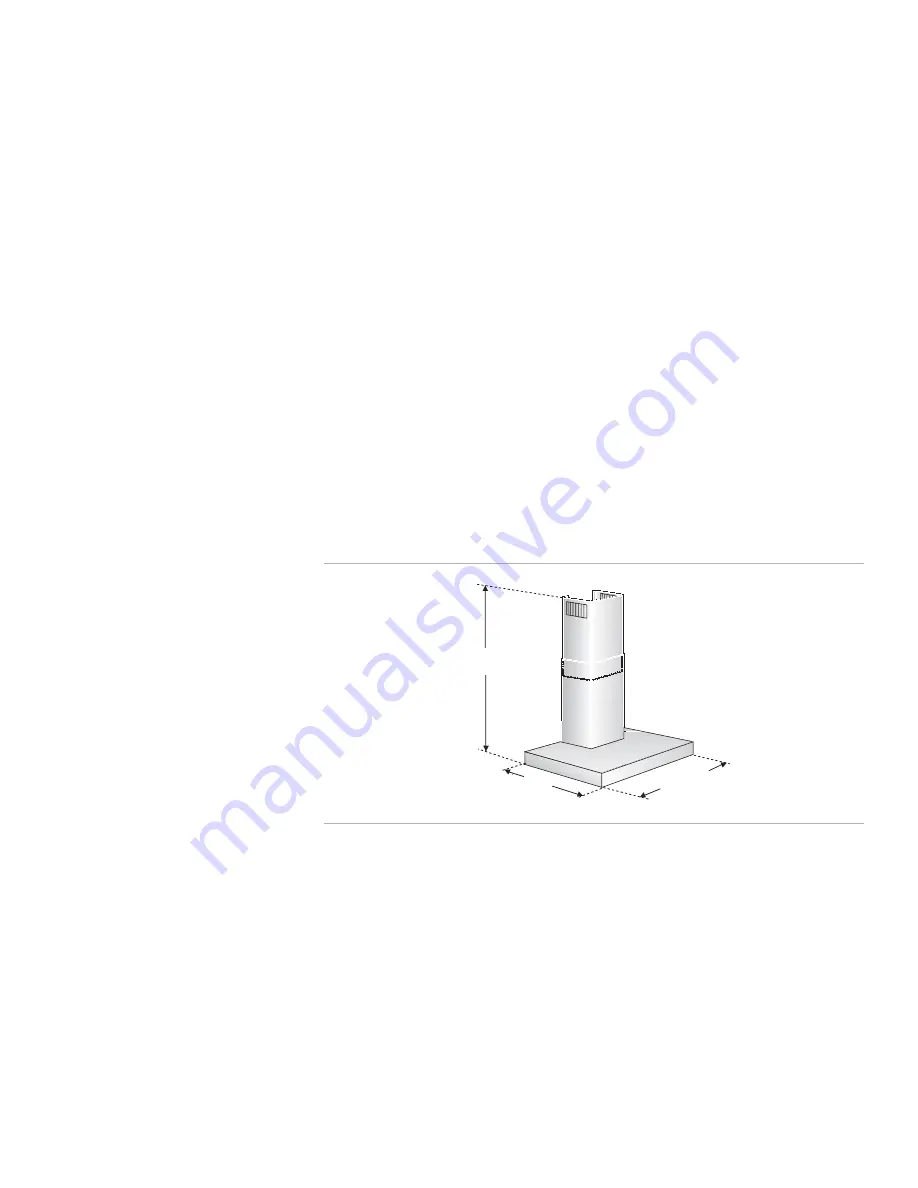
English 3
Ducting Recommenda-
tions
The hood can be ducted to the outside or used with a recirculation unit. The recir-
culation unit is available from your dealer.
For the most efficient air flow exhaust, use a straight duct run or as few elbows as
possible.
Do not use flex ducting. Always use metal ductwork with minimum diameter of
6”
(150 mm). A transition is necessary to connect to larger diameter ductwork or to
square ductwork.
COLD WEATHER installations should have an additional backdraft damper
installed to minimize backward cold air flow and a nonmetallic thermal break to
minimize conduction of outside temperatures as part of the ductwork. The damper
should be on the cold air side of the thermal break. The break should be as close
as possible to where the ducting enters the heated portion of the house.
Always install a metal vent cover where the ductwork exits the house.
Make-Up Air: Local building codes may require the use of make-up air systems
when using ducted ventilation systems greater than specified CFM of air move-
ment. The specified CFM varies from locale to locale. Consult your HVAC profes-
sional for specific requirements in your area.
Overall Dimensions
The overall dimensions are:
•
Width: 30” (760 mm) / 35 1/2" (900 mm)
•
Depth: 20" (500 mm)
•
Height: 30 1/2 -46 1/2” (775-1187 mm), depending on chimney extension
Mounting Requirements
The hood must be mounted through the back wall. It cannot be mounted from
above. See “General Information” on page 2 for suggestions for determining hood
height.
For safety purposes, the wall must be able to support three times the weight of the
hood. See “Minimum Weight Requirements” on page 4 for the minimum amount
Figure 1:
Overall
Dimensions
30 1/2 - 46 1/2"
(775 - 1187 mm)
20"
(500 mm)
30 / 35 1/2"
(760 / 900 mm)
Summary of Contents for DKE 94 Series
Page 1: ...Bosch ventilation installation manual DKE94 ...
Page 11: ......
Page 21: ......
Page 31: ......

